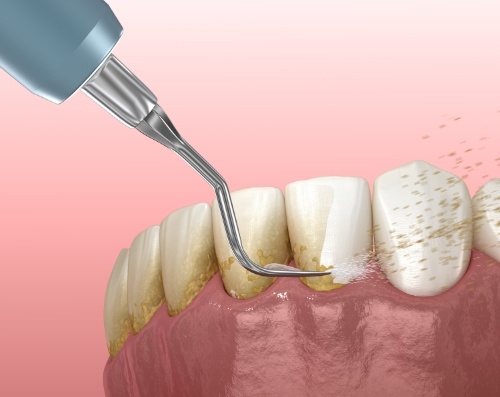Gum Disease Treatment - Forest Lake, MN
How We Help Patients with Gum Disease

While it may not seem like it at first, gum disease is a major threat to your oral health. The longer the problem goes untreated, the more likely it is to result in tooth loss. On top of that, there’s a connection between gum disease and various health issues like heart attacks and strokes. For the sake of your oral and overall health, our team at G2 Dental is ready to help you find a way to get your gum disease under control. Call us today if you think you may need to schedule a periodontal consultation.
Why Choose G2 Dental for Gum Disease Treatment?
- Gentle Scaling and Root Planing
- Diode Laser for Periodontal Treatments
- Friendly, Highly Experienced Dental Team
Scaling & Root Planing

Depending on how advanced your gum disease is, it may be necessary for us to perform a deeper cleaning than normal. Step one is scaling, which involves getting rid of any plaque and tartar that may be hiding under your gumline. After scaling is complete, we can move on to root planing. This is when we take the roots of the teeth and gently smooth them out; the benefit of this is that it ultimately makes it easier for the gums to reattach themselves as they heal.
These deep cleanings are normally performed with local anesthesia to numb the teeth and oral surfaces being cleaned. Depending on the severity of your condition, scaling and root planing may be performed per tooth or by quadrant. Typically, the upper and lower quadrants on one side of the mouth are done at one appointment, with the other side completed at a second appointment.
Laser Periodontal Treatment

At our office, the scaling and root planing process often involves a diode laser. We can use said laser to eliminate bacteria that may have built up in the pockets between your teeth and gums. Laser periodontal treatments have several benefits; they are associated with shorter recovery times, they reduce the amount of bleeding associated with the procedure, and they are highly precise at targeting bacteria within the gingival sulcus.
